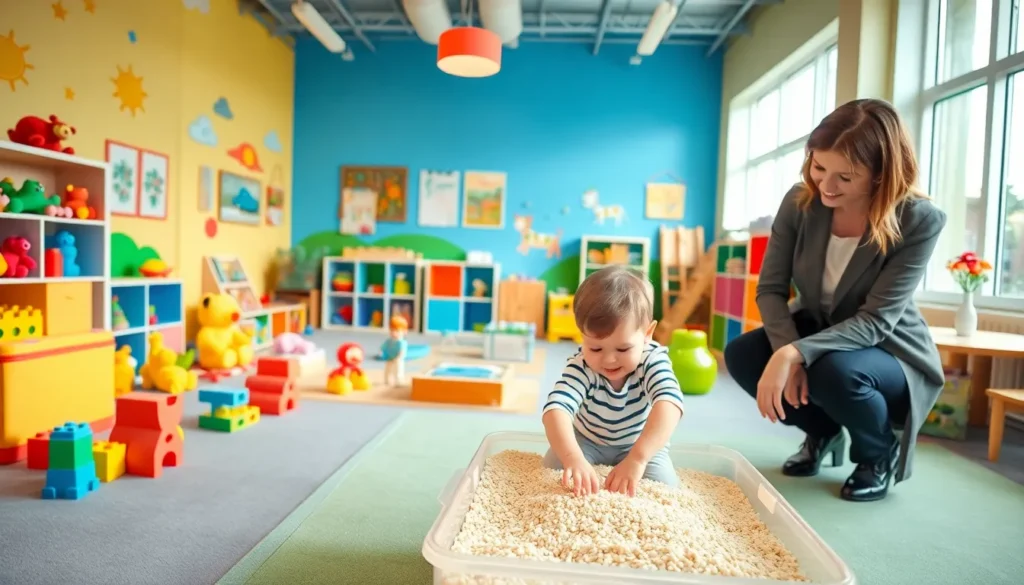Navigating the complexities of co-parenting can be challenging, but a well-structured co-parenting plan can make all the difference. This essential tool helps parents outline their responsibilities and establish clear communication, ensuring that the child’s needs remain the top priority. By setting boundaries and expectations, a co-parenting plan fosters a cooperative environment for both parents and children alike.
Creating a co-parenting plan isn’t just about logistics; it’s about building a foundation for a healthy relationship post-separation. It encourages mutual respect and collaboration, allowing parents to work together effectively. In this article, readers will explore the key elements of a successful co-parenting plan and learn how to implement it for the benefit of their family.
Table of Contents
ToggleOverview Of Co-Parenting Plans
A co-parenting plan serves as a structured agreement between parents after separation or divorce. This plan outlines responsibilities, communication methods, and parenting strategies, all focused on the child’s best interests.
Definition And Importance
A co-parenting plan is a formal document that defines how parents will collaborate in raising their child. It addresses essential aspects like custody arrangements, visitation schedules, and conflict resolution strategies. Establishing such a plan is crucial as it provides clarity and stability, reducing the potential for misunderstandings. A well-crafted plan promotes effective communication, ensuring both parents remain informed and involved in their child’s life.
Key Components
- Custody Arrangements: Define physical and legal custody, and outline where the child will live and how joint decision-making will occur.
- Visitation Schedules: Specify daily, weekly, and holiday visitation times, detailing any special arrangements for events or vacations.
- Communication Guidelines: Establish preferred methods of communication and protocols for discussing parenting matters, addressing both urgency and decorum.
- Education and Health Care: Outline responsibilities for educational decisions, medical care, and sharing of information regarding the child’s health and schooling.
- Conflict Resolution: Identify steps for resolving disagreements, including mediation or counseling options, to promote cooperation and minimize disputes.
- Modification Procedures: Describe how the plan can be updated or adjusted as circumstances change, ensuring it remains relevant and functional over time.
Creating A Co-Parenting Plan

A structured co-parenting plan ensures clarity and stability. It addresses key aspects of shared parenting while focusing on the child’s needs.
Steps To Develop A Plan
- Identify Goals: Establish shared goals for your child’s well-being and development.
- Outline Responsibilities: Define each parent’s duties and obligations regarding child care and decision-making.
- Schedule Visitation: Create a clear visitation schedule, detailing days and times for each parent.
- Establish Communication: Set guidelines for how parents will communicate regularly regarding the child’s needs and important events.
- Plan for Education and Health: Assign responsibilities for educational decisions, doctor visits, and health care needs.
- Create Conflict Resolution Strategies: Outline specific methods for resolving disputes amicably, such as mediation or consultation with a neutral third party.
- Review and Adjust: Schedule regular reviews of the plan to accommodate changes in circumstances or the child’s needs.
Tools And Resources
- Online Templates: Utilize co-parenting plan templates available on websites like the American Psychological Association or LegalZoom.
- Co-Parenting Apps: Consider using co-parenting apps, like Our Family Wizard or Cozi, to track schedules and share important information.
- Counseling Services: Seek support from family therapists or mediators specializing in co-parenting to facilitate communication and resolve conflicts.
- Legal Resources: Consult with a family law attorney to ensure legal aspects of the plan comply with state laws and protect parental rights.
- Books and Guides: Read literature on co-parenting strategies, such as “Co-Parenting with a Toxic Ex” for practical advice and insights.
Implementing A Co-Parenting Plan
Establishing a co-parenting plan requires careful implementation to ensure that all elements function effectively for the family’s benefit. Key areas include communication strategies and navigating challenges that may arise.
Communication Strategies
Effective communication remains a cornerstone of any successful co-parenting plan. Parents must establish clear and consistent methods for discussing the child’s needs and addressing potential issues. Some effective strategies include:
- Using Co-Parenting Apps: These platforms facilitate real-time communication, track schedules, and store important documents.
- Setting Regular Check-Ins: Scheduling weekly discussions helps parents stay aligned on decisions and updates related to the child.
- Maintaining Respectful Tone: Clarity and respect during conversations minimize misunderstandings and foster collaboration.
- Utilizing Written Communication: Email or messaging apps provide a record of discussions, which can support accountability and transparency.
Navigating Challenges
Challenges often arise during co-parenting. Addressing difficulties promptly can prevent escalation. Consider these approaches:
- Acknowledging Emotions: Validating feelings allows each parent to express concerns while maintaining focus on the child’s welfare.
- Being Flexible: Adapting plans as needed ensures responsiveness to the child’s changing needs and circumstances.
- Seeking Mediation: Professional mediation offers guidance and support for resolving disputes effectively.
- Revisiting the Plan Regularly: Regular reviews of the co-parenting plan ensure it remains relevant and effective, adapting to changes in family dynamics.
Implementing a co-parenting plan can enhance cooperation, ensuring both parents work together toward the child’s best interests.
The Benefits Of A Co-Parenting Plan
A well-crafted co-parenting plan offers significant advantages for both children and parents. It establishes a framework that supports cooperation and prioritizes the child’s well-being.
For Children
Co-parenting plans provide children with stability, ensuring they receive consistent care and support from both parents. Emotional security increases as children understand their routines and expectations. Research indicates that children in structured co-parenting environments fare better academically and socially. They often experience reduced anxiety and improved relationships with both parents, leading to healthier family dynamics.
For Parents
Co-parenting plans benefit parents by clarifying roles and responsibilities, which minimizes conflict and misunderstandings. Parents experience reduced stress through structured communication guidelines, fostering a respectful atmosphere. Consistency in parenting approaches encourages collaborative decision-making, reinforcing parental unity. By regularly reviewing the plan, parents can adapt to changing circumstances, ensuring continued effectiveness and promoting a cooperative co-parenting relationship.
A well-crafted co-parenting plan is essential for fostering a positive environment for both children and parents. It lays the groundwork for effective communication and mutual respect, ensuring that everyone remains focused on the child’s best interests. By addressing responsibilities and creating strategies for conflict resolution, parents can navigate the challenges of co-parenting with greater ease.
Regularly reviewing and adapting the plan keeps it relevant, accommodating any changes in circumstances. This proactive approach not only enhances cooperation but also strengthens the family dynamic. Ultimately, a solid co-parenting plan paves the way for healthier relationships and a brighter future for children.




